It is an example of one of those things you don’t notice until someone points it out to you, and then you see it everywhere. Recollections recently suggested that a post on Victorians and plaid may make for a fun read. I had never really thought about it before, but when I started looking for it, I noticed that a LOT of 19th-century dresses are made with plaid fabrics. As with many Victorian trends, the origin of their love of plaid can be traced, with specific changes through time.
I thought this week we would take a brief look at the history of Victorians and plaid and then enjoy browsing some of my favorite dresses made with the indomitable pattern.
A brief history of Victorians and plaid
The plaid pattern can be traced back to the tartan sashes worn by various Scottish families and regions. It is believed that the custom was in place by the 16th century, though the evidence mostly exists in references to checkered clothing and not surviving pieces. Whatever the case, it was thoroughly ingrained in pars Scottish culture by the mid-1700s, namely in the Highlands.
Tartan was so associated with the Highlands that it was banned in all of Scotland in the Dress Act of 1746. The act was a part of the Jacobite Risings that took place between 1689 and 1746 and attempts to bring the clans under national control. The act was repelled in 1782 and tartan would soon soar to fame in all of Britain. In 1822 King George IV would visit Scotland, being met with pomp and circumstance that included an abundance of tartan. King George took a liking to the design, causing it to grow in popularity.
Trendsetters Queen Victoria and Prince Albert would take this popularity to a new level when they visited Scotland in 1848. Among their activity was to refurbish Balmoral Castle, which King Albert adorned with tartan. Additionally, Queen Victoria had dresses made using the pattern and dressed her ever-growing family in Highlands clothing. As with many things she was pictured wearing, the trend took off.
Tartan vs plaid
By the time Queen Victoria popularized the tartan pattern in England and beyond, it was replaced by plaid for mass production. Not sure of the difference? Let’s allow the experts to explain.
Answering the question “What’s the Difference Between Tartan and Plaid?” for HouseBeautiful, designer Scot Meacham Wood said:
“All tartans are plaid, but, not all plaids are tartan.
To keep things simple, I’m just going to stick to the basics and try not to overwhelm you with too much technical detail. All plaids and tartans are comprised of stripes (in varying sizes and colors) that meet at a 90-degree angle. We start heading into ‘tartan’ territory by looking at the geometry on the pattern. With most every tartan, the pattern on the stripes running vertically is exactly duplicated on the horizontal axis too. Basically, this matching pattern in both directions will create a grid. The warp and weft threads are then woven in a two-over-two “twill” pattern. When looking at a simple plaid, you’ll notice that the stripes — either in color, size, or pattern — are not the same in both directions.”
As you can see, it would have been much easier for plaids to be produced on a mass scale with less attention given to proper angles than tartan. And with that, let’s take a look at some of the Victorian plaid trends and some stunning examples of surviving plaid dresses.
Plaid as accents
Plaid was a popular pattern used to add a dash of color to an outfit. It was used for sashes, trims, and bonnets. I hadn’t paid much attention to the later before but I think they are just the cutest!
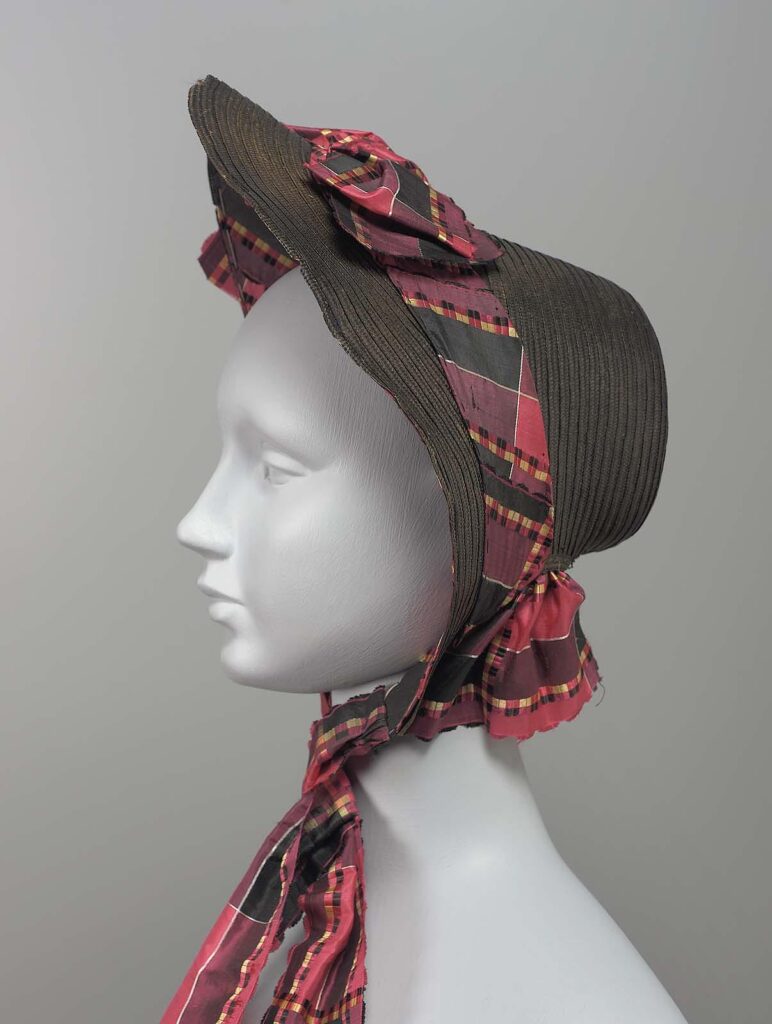
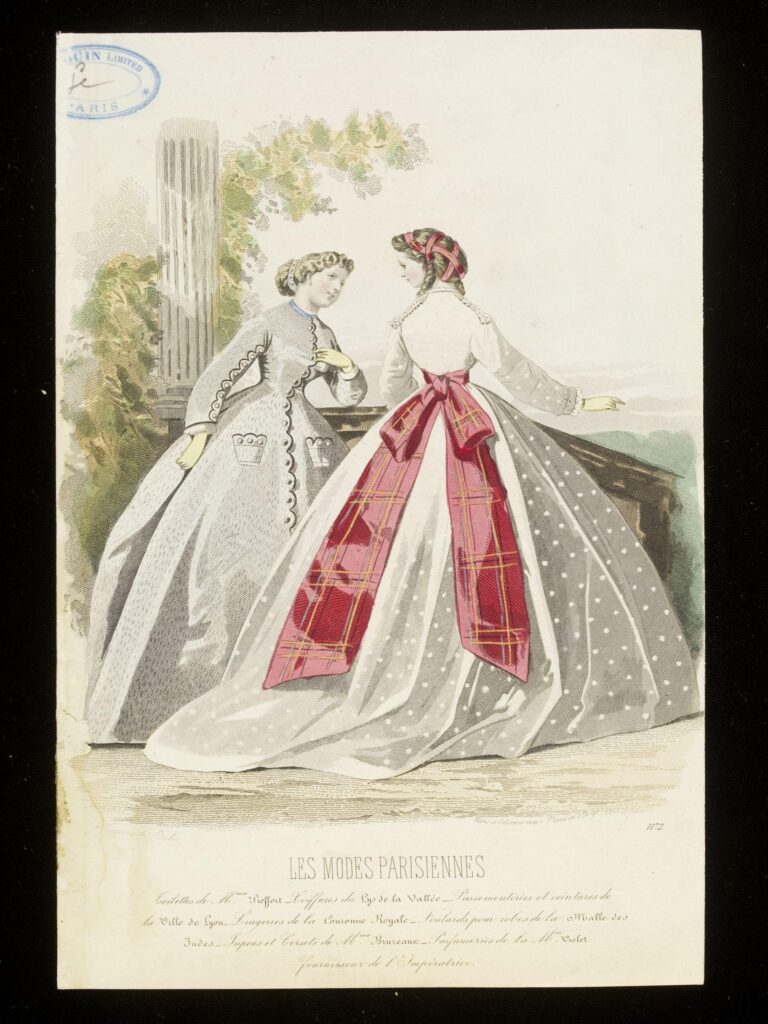
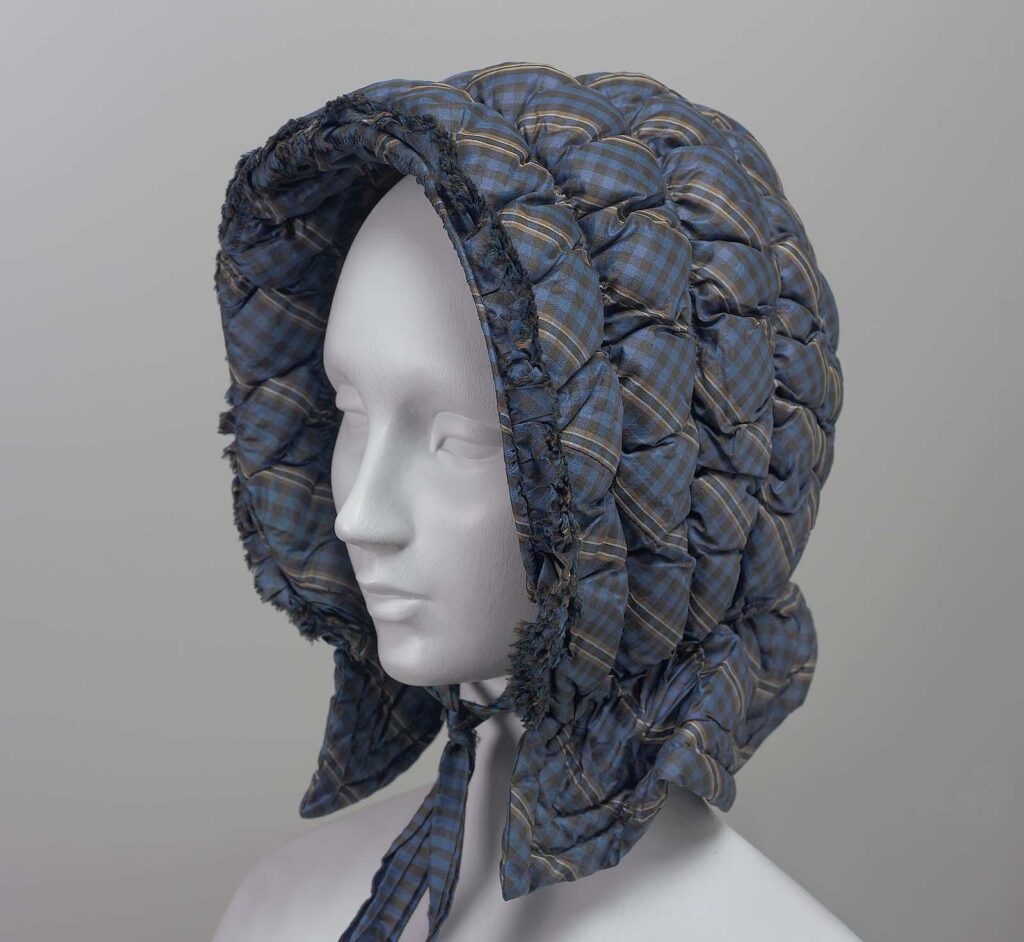
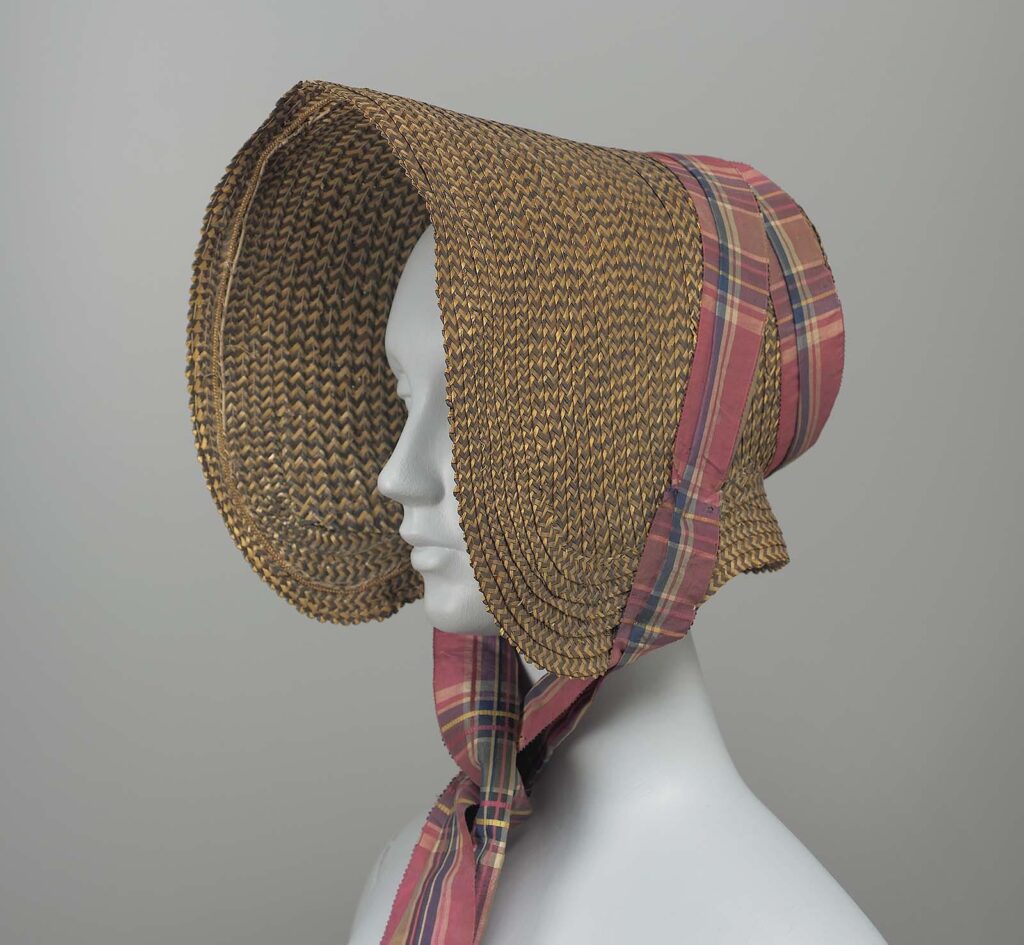
Children’s clothing
Another trend that I noticed with Victorians and plaid was that they loved to dress their little ones in it. Check out these amazing examples that I found.
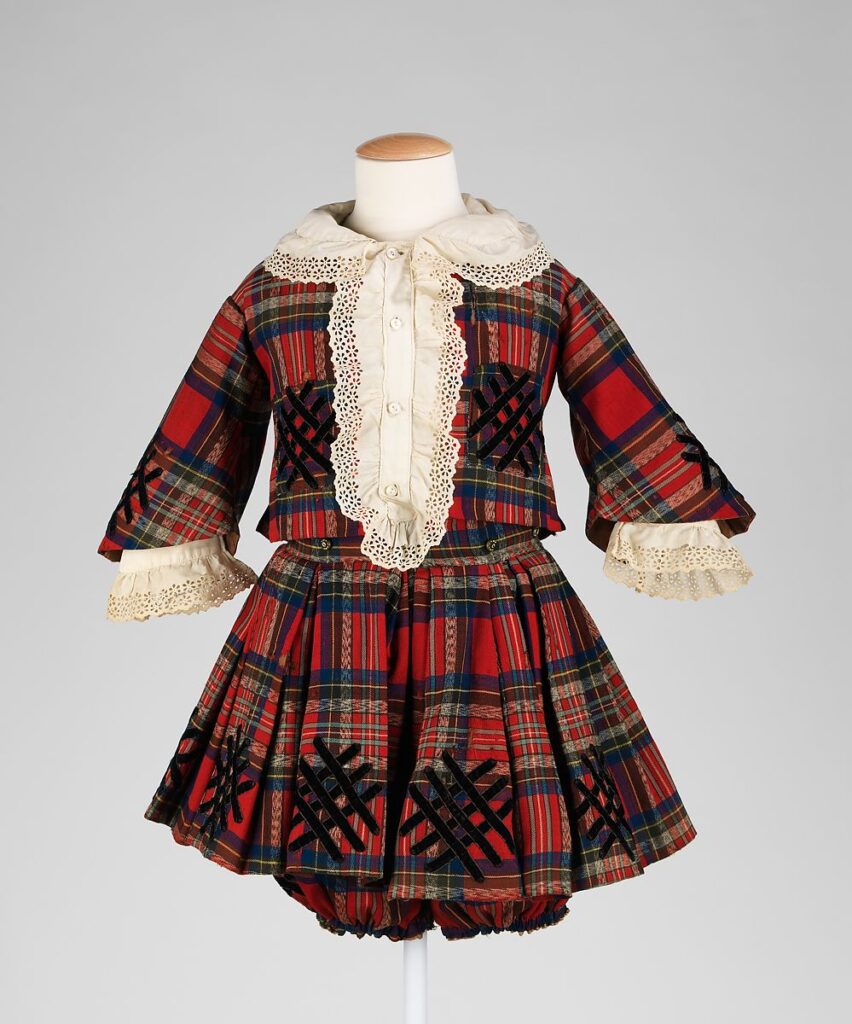
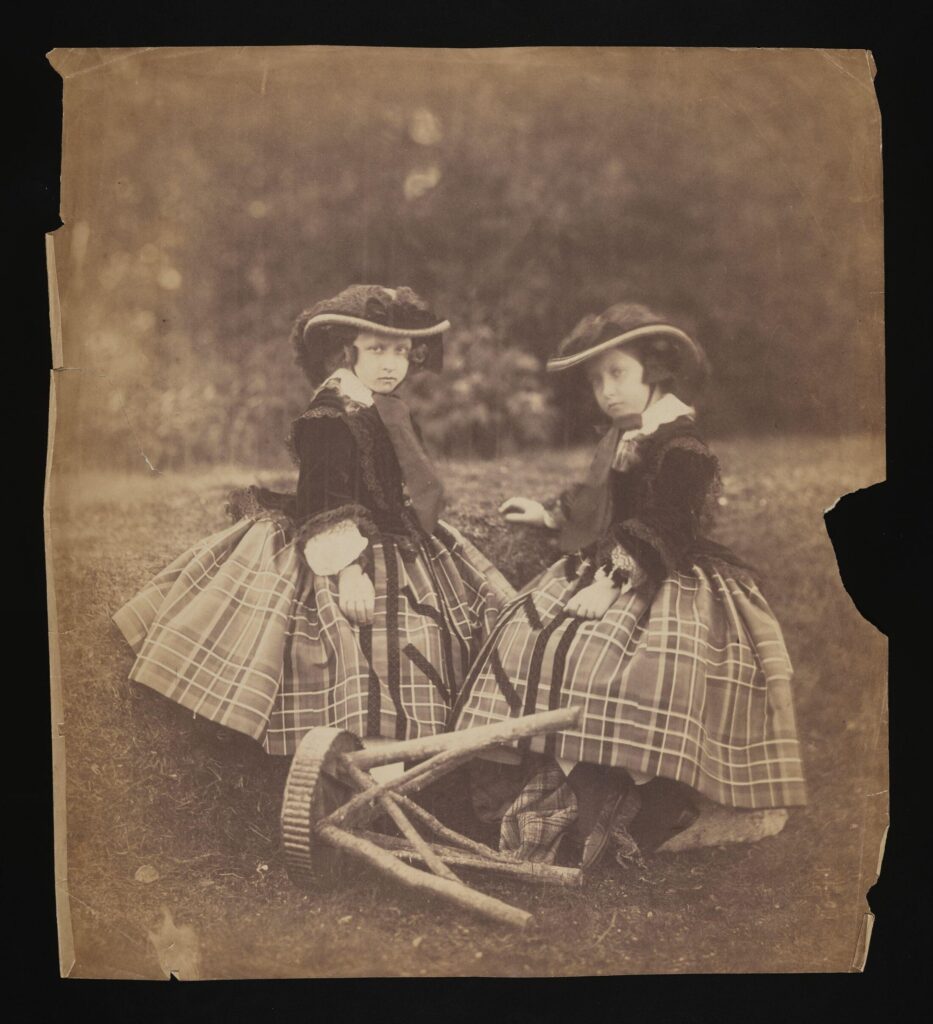
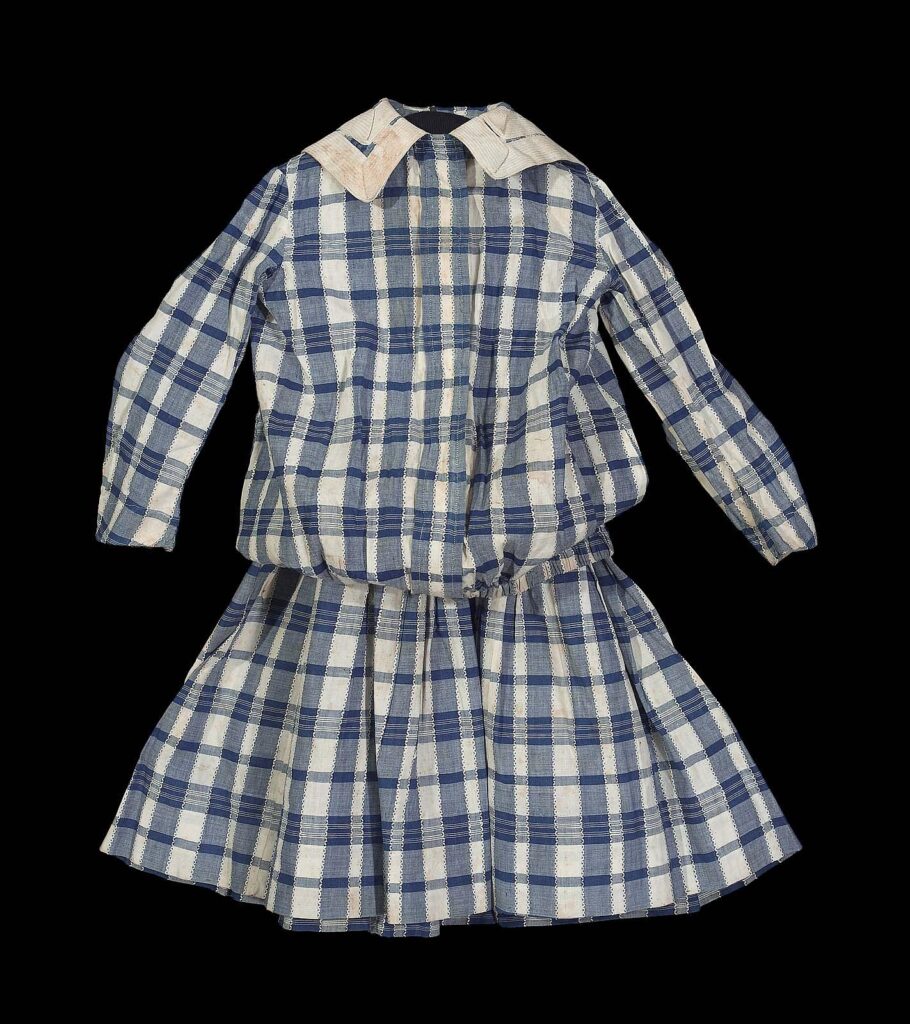
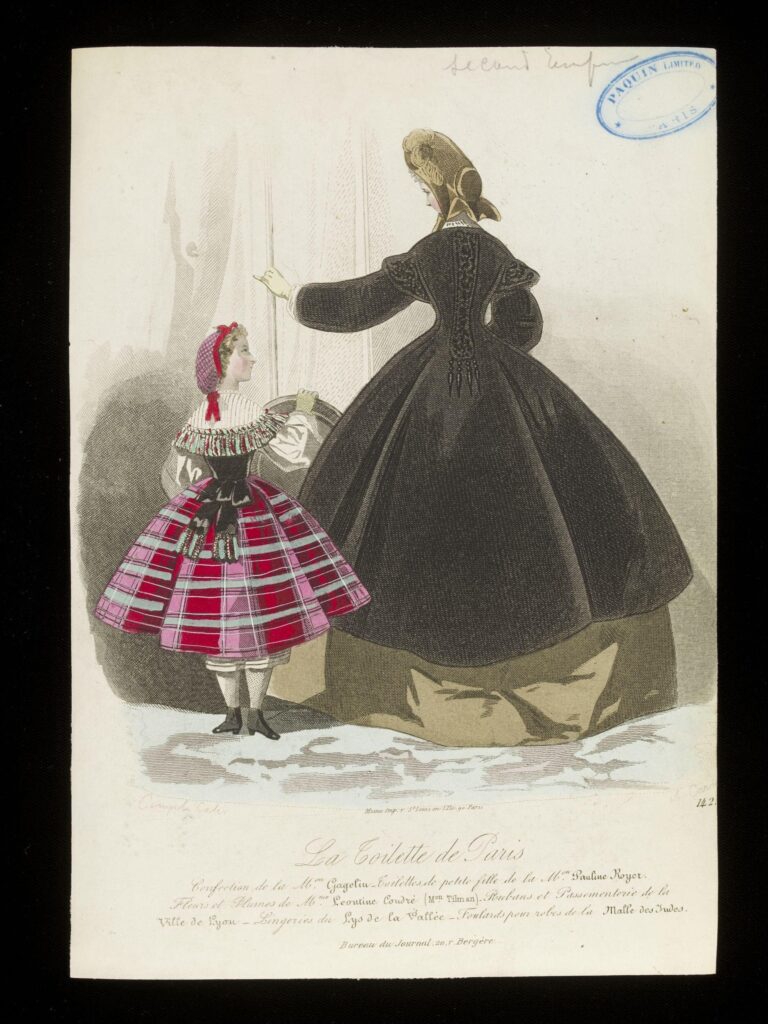
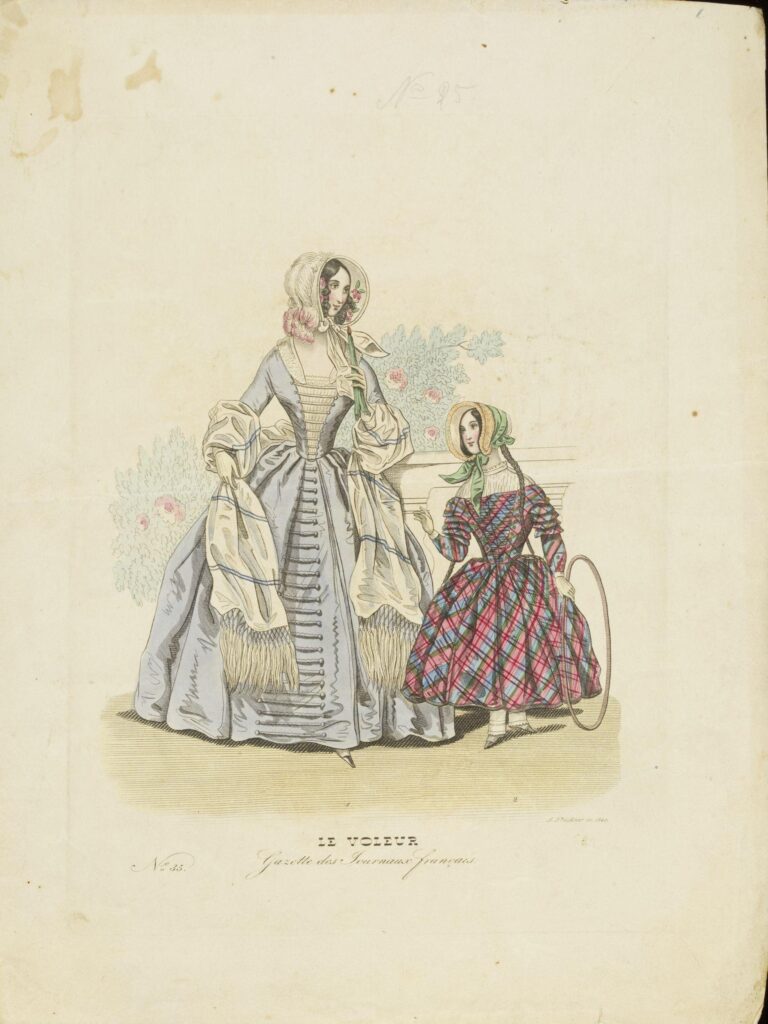
Plaid as primary
And of course, entire gowns and dresses were made of plaid. I was so excited to find these great examples.
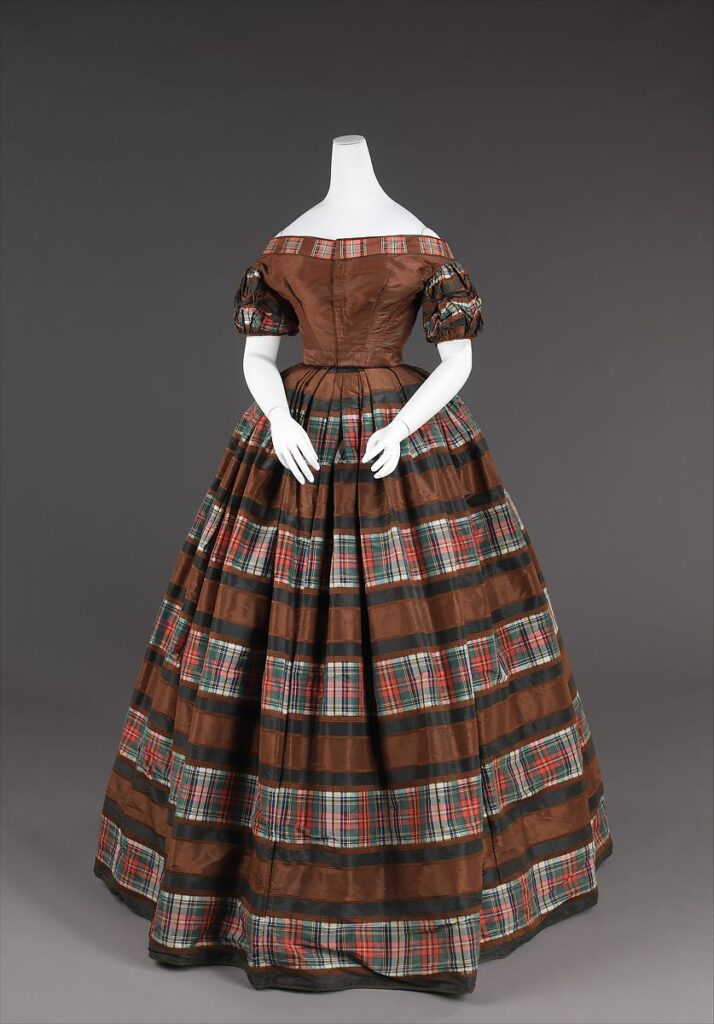
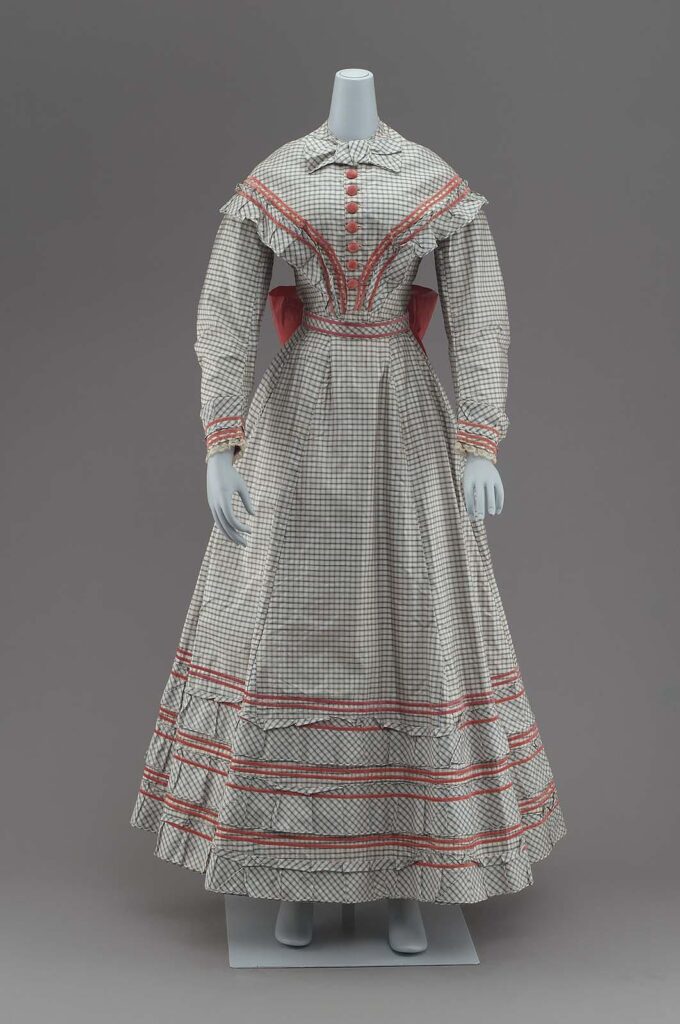
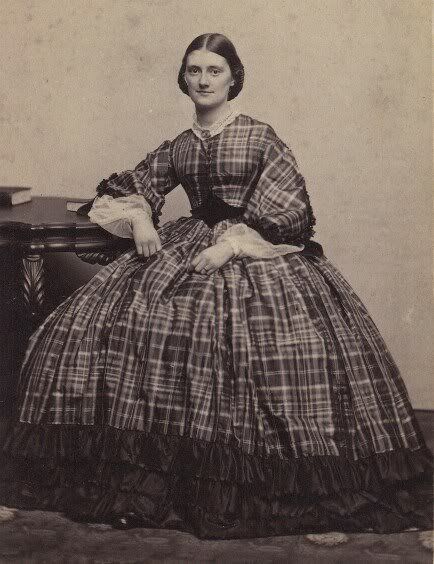
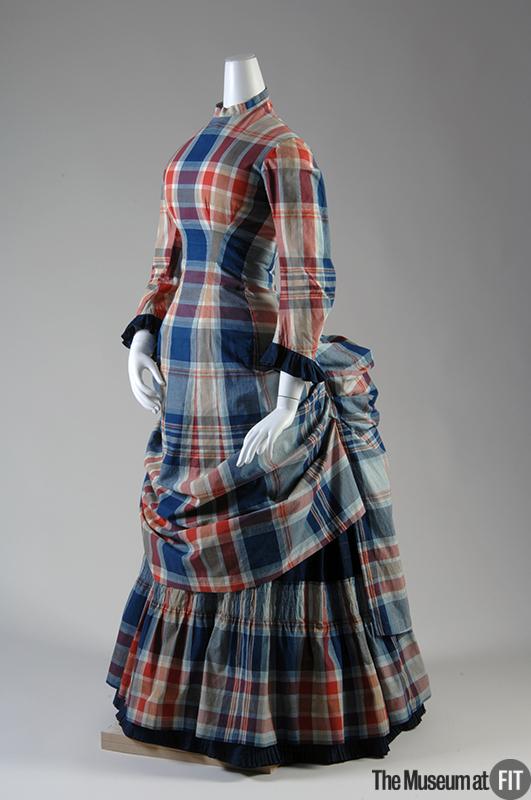
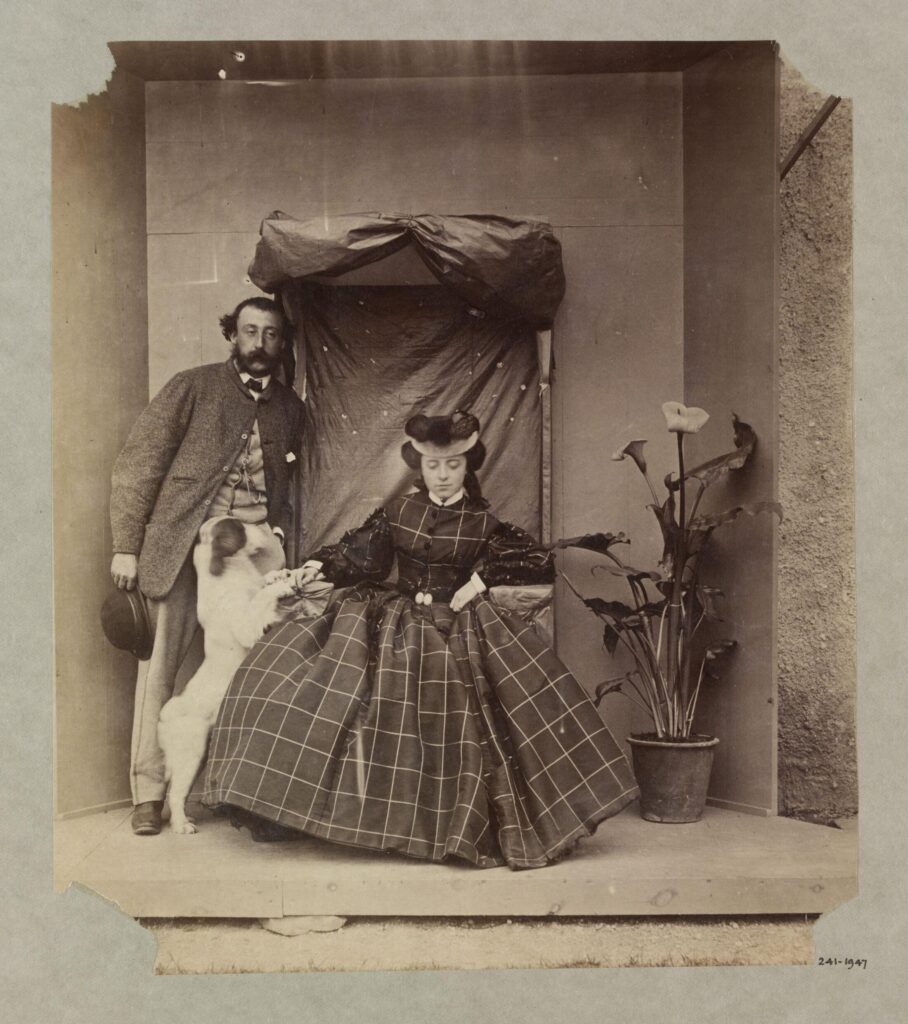
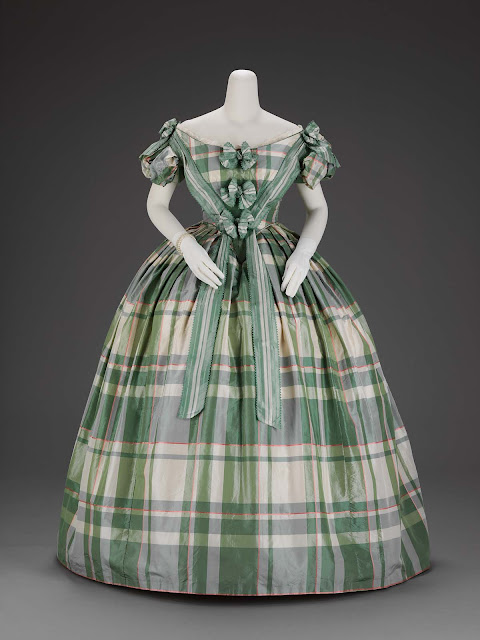
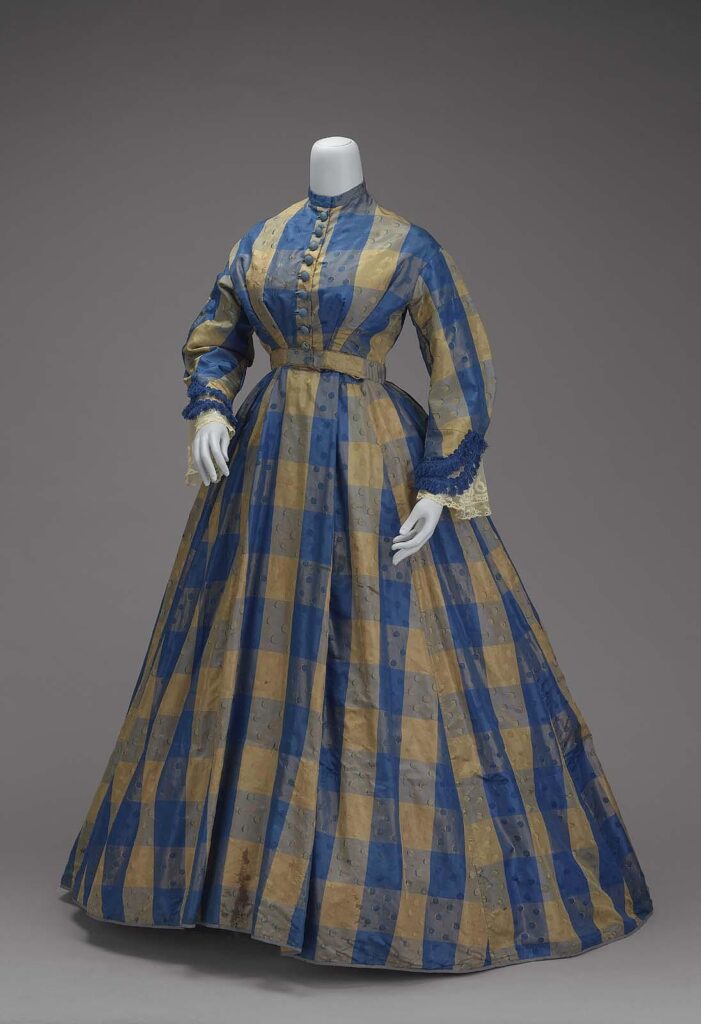
More Victorian fashion fun:
Elegance at Home: Victorian Wrappers
The rise and fall of puffy sleeves



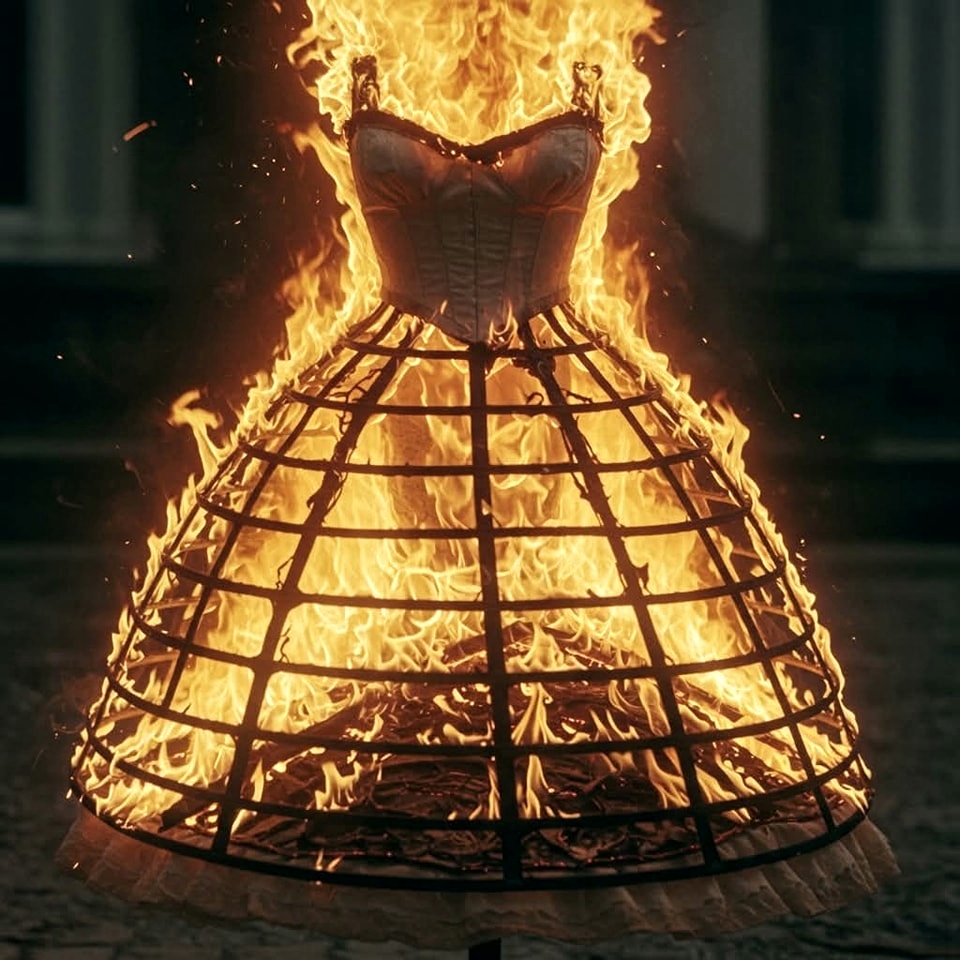




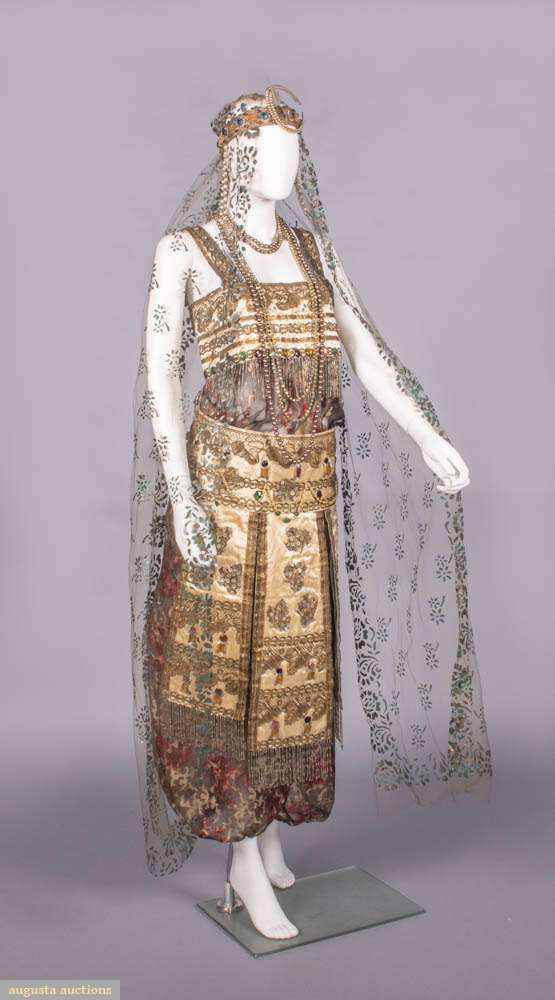
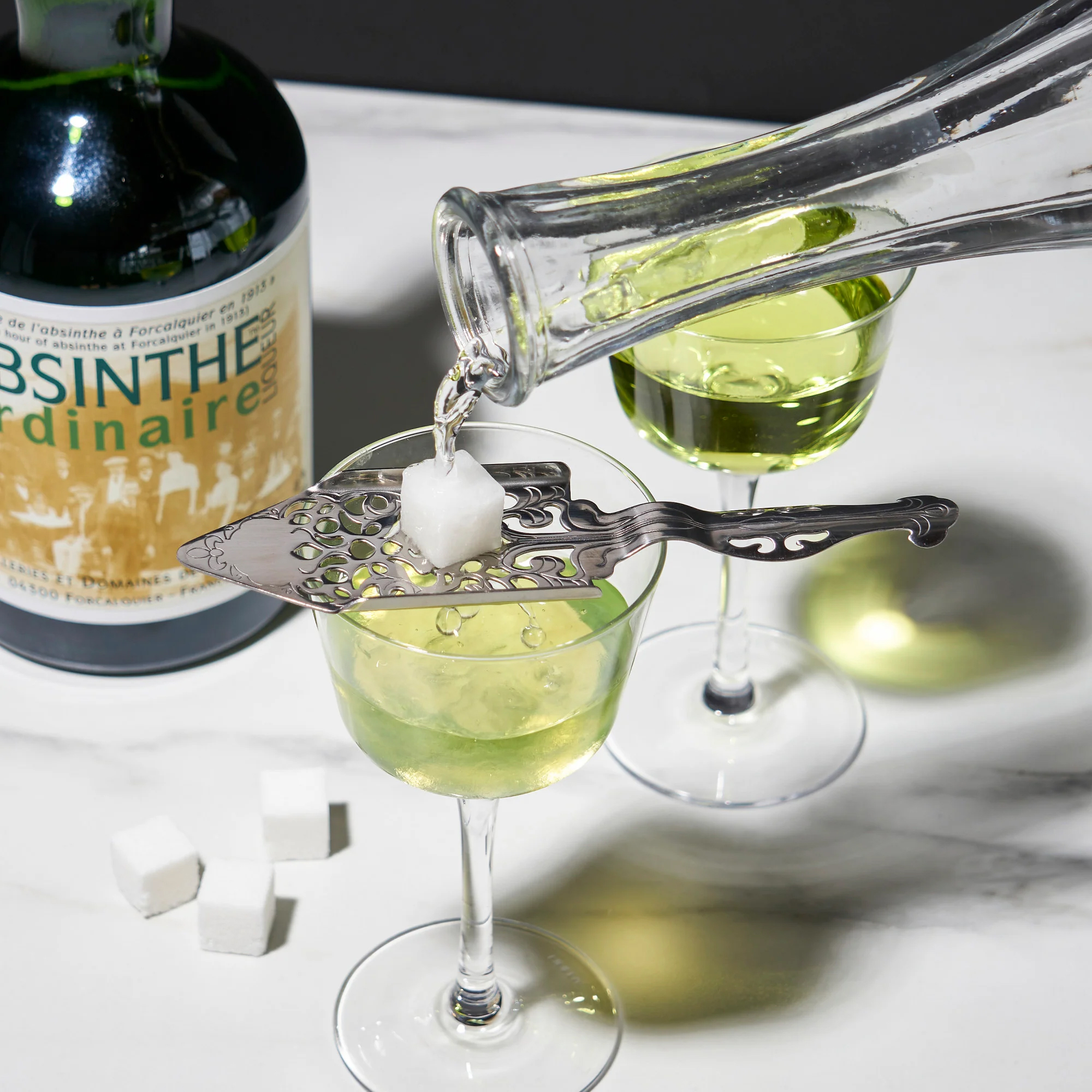



Hi Kathy, we always are looking for plaids and get the good ones when we can. Thanks for your vote on multi color plaids!
So maybe we can get some multi-color plaids in the print fabric selection – ?
Thx so much, I’ve learned a lot in your article